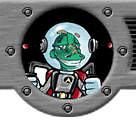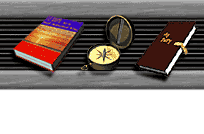Procedures
Rules and procedures
provide structure for the classroom. How are they different?
Procedures
are a specific way of doing something and the set of steps that make a
task simpler or easier.
They are
specific to a task, time and place.
They fit together like a ritual and become habit with practice.
They are not wrong or right, but expedient or part of a person's expectations.
They are often personality specific and depend on an authority figures
need for order.
Keep them:
- situation
specific
- clean
and simple
- value
free
| Sample
Procedures |
| Primary |
Elementary |
Secondary |
Lining up
Leaving the room
Carrying scissors
Going to the bathroom
Washing up
Pasting
Cutting
Morning roll call
Circle time
Talking
Going to lunch
Playing with toys |
Moving about the school
Running errands
Turning in papers
Special classes
Lunch room behavior
PE participation
Center time
Homework
Seat work
Stewardship of desk area
Tardiness and attendance
Cooperative Learning
Pencil sharpening |
Hall behavior
Care of lockers
Turning in papers
Plagiarism
Socialization
Dress code
Use of vulgar language
Homework
Class participation
Attendance
Substance abuse
Respect of authority
Extra curricular programs |
Tips
- Review
your current procedures.
- Choose
the most irritating part of your classroom day and develop a set of
procedures that will streamline the task or transition.
- Implement
the chosen procedure. Consider the following suggestions:
- explain
to students why you want the change
- go
over your chosen procedures
- give
students an opportunity to discuss and augment the plan
- practice
together, first verbally, then actually go through the processes
to build the habit
- show
gratitude or appreciation for those who help support the learning
process
- review
the process, periodically, once it is habituated
- be
patient and avert power plays or control issues with students who
are initially resistant
Once you
have completed this topic you should:
Go back to Online Reading 2
|
















